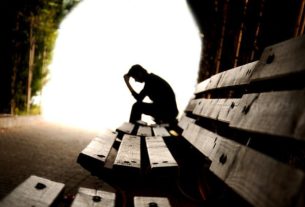The hillside Upper Galilee town of Meron will be closed on Lag Ba’Omer on Saturday night and Sunday to the usual huge crowd of celebrants due to security risks from Hezbollah terrorists on Lag Ba’Omer – the 33rd day of the counting between Passover and Shavuot.
But celebrations will nevertheless be marked around the country with bonfires and dancing.
Many people ordinarily go the grave of Rabbi Shimon Bar-Yohai, the Mishnaic safe who died on that day about 1,800 years ago to pray and light bonfires.
The event also marks when a plague that swept through the students of the sage Rabbi Akiva ended and mourning customs cease.
The Health and Environmental Protection Ministries have urged those who celebrate to ensure safety and health and protect the environment.
Health Minister Uriel Bosso warned that “bonfires can be dangerous to public health and the environment. Everyone must follow the safety procedures and obey the instructions so as to avoid unnecessary harm. I call on parents to remain vigilant.”
Environmental Protection Minister Idit Silman added that “this year too, and especially now, we must protect the environment and the health of ourselves and our children. Family gatherings without polluting the environment should be replaces by alternative activities like family walks in nature.”
Health and safety guidelines
In addition, in preparation for the hot weather conditions at 30 degrees Celsius and higher that raise the risk of fires igniting and spreading, the Israel Fire and Rescue Commissioner signed an order allowing bonfires to be lit only in places that have been prepared for this purpose by the local authority and have received fire department approval.
The order includes a ban on lighting fires in parks, Jewish National Fund/KKL forests, and nature reserves.
According to Environmental Protection Ministry data, last year saw a decrease in air pollution on the holiday compared to previous years. This trend has been evident in recent years thanks to the call by fire and rescue forces, the ministries, and various authorities to hold alternative social activities. It seems that there has been an increase in public awareness to avoid burning trees and lighting fires.
However, last year there were still high particle concentrations compared to a clear day in most of the cities and towns, and the maximum concentrations measured were 14.1 times that of a clear day without bonfires.
Children are the most sensitive population in terms of the effects of air pollutants on the respiratory tract. When wood burns, concentrations of respirable particles that are extremely dangerous to human health are emitted into the air, as well as large amounts of carbon dioxide, a greenhouse gas that causes global warming.
This presents itself by an increase in the number of children and even adults taken to hospital emergency rooms due to damage in the larynx and on other parts of the body.
If you do go a bonfire, never steal wooden platforms from constructions sites. Never throw objects, including utensils, made from plastic and Styrofoam or spray cans into the fire. The burning of these substances and gas and fuel can cause explosions and the emission of toxic substances that can cause cancer and is accompanied by bad odors. Don’t throw stones or pieces of glass into the fire as they can also explode.
Solid wood substitutes such as melamine, M.D.F and Formica should not be burned, as their manufacturing process includes mixing with various adhesives, and they emit particles into the air when they are burned that contain dangerous substances. Don’t throw wood painted with paint or varnish into the fire.
Place the campfire in an area free of thorns and weeds, at a reasonably safe distance from buildings and facilities. Do not light a fire under electricity and telephone lines, near trees and bushes or fuel facilities Avoid using plastic utensils and plates that will be used for only five minutes but will remain in the environment for hundreds of years Bring trash bags with you to the campfire and leave a clean place behind.
Separate the recyclable waste such as bottles and packaging, and if there is no bin nearby, take the trash with you to the nearest bin Appoint a responsible adult be present when the bonfire is set up setting up the bonfire, from the stage of collecting the branches to the completion of the bonfire. Do not leave the children unattended even for a moment. Planks must not have metal nails sticking out that could cause serious injury.
Wear high-top shoes and long pants and a suitable shirt to protect the body from stings and embers and the bites of snakes and scorpions that are attracted to the heat of the fire. Bring a first-aid kit and keep two full buckets of water near the bonfire in case it spreads. Don’t sit close to the fire and not in the direction towards which the smoke is facing to avoid injury to the respiratory tract, eyes and face.
Broiling potatoes and onions on skewers should be done only by adults. Before serving them to children, make sure they are not too hot to eat, as very-hot food can cause severe burns in the mouth and esophagus.
In the event of a fire, extinguish it immediately and call the fire and rescue center at 102.


